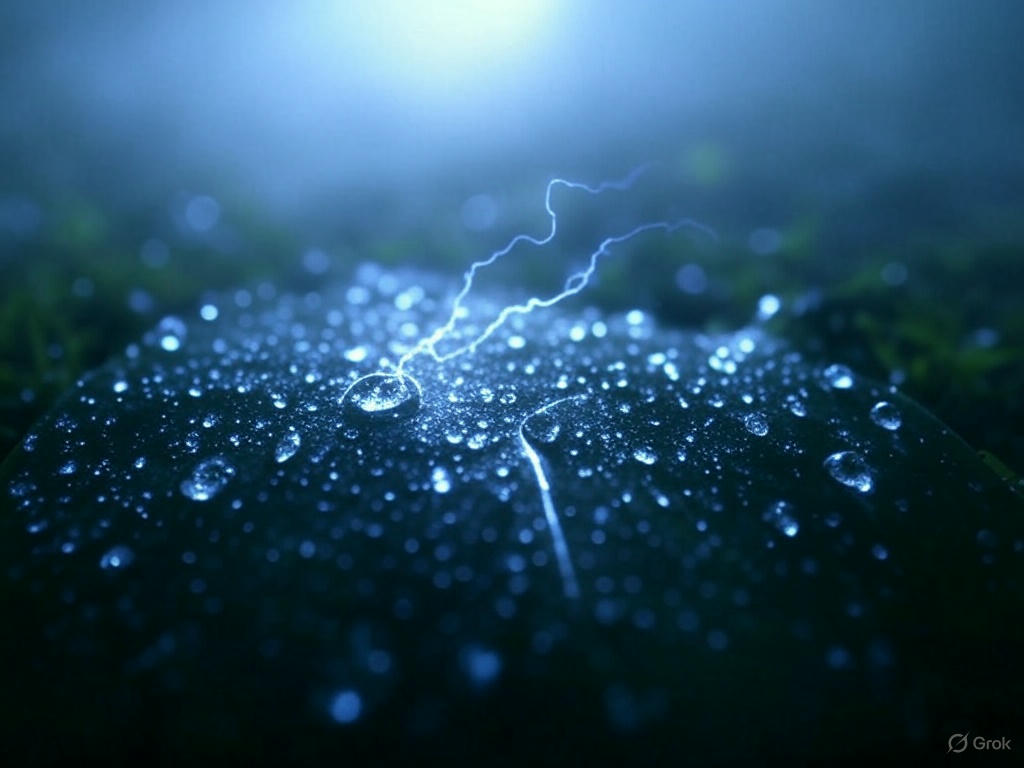Imagine a world billions of years ago, where crashing waves and thundering waterfalls didn’t just sculpt the landscape—they ignited the spark of life itself. Recent scientific discoveries suggest that tiny electrical discharges, dubbed microlightning, within water droplets might hold the key to unraveling the origin of life. Far smaller than the dramatic bolts we see in a storm, these microscopic zaps could have powered the chemical evolution that turned a lifeless Earth into a cradle for biology. Let’s dive into this electrifying phenomenon and explore how it reshapes our understanding of abiogenesis.

What Is Microlightning in Water Droplets?
Picture the ocean’s spray or a misty waterfall: as water droplets collide and break apart, something incredible happens. These tiny droplets generate electric discharges in water droplets, a process now called microlightning. According to The Guardian, this phenomenon occurs naturally during events like waves crashing or water tumbling over rocks. It’s not just a poetic spectacle—scientists have found that these miniature lightning bolts pack a punch, creating intense electrical fields that rival the power of a thunderstorm, all within a droplet smaller than a grain of sand.
How Does Microlightning Form?
The magic lies in water droplet charge separation. When droplets smash together or split apart, positive and negative charges separate, much like rubbing a balloon on your hair. Study Finds reports that this can produce electrical fields exceeding 8 billion volts per meter—strong enough to rival industrial spark gaps. This isn’t a gentle static cling; it’s a high-energy event capable of driving chemical reactions. Think of each droplet as a tiny power plant, buzzing with potential in Earth’s primordial conditions.
Microlightning and Prebiotic Chemistry: A Game-Changer
So, how does this connect to the formation of organic molecules? In the chaotic soup of prebiotic chemistry, energy is everything. Microlightning could have acted like a cosmic chef, zapping simple molecules—like water, methane, and ammonia—into more complex ones, such as amino acids and nucleotides, the building blocks of life. Bioengineer.org highlights how these electrical discharges provide the energy needed to forge these essential compounds without relying solely on volcanic heat or cosmic rays. It’s a ubiquitous, efficient mechanism that might have been humming along wherever water flowed on early Earth.
A Fresh Twist on the Miller-Urey Experiment
For decades, the Miller-Urey experiment has been the poster child for abiogenesis, showing how electric sparks in a simulated primordial atmosphere could create organic molecules. But microlightning offers a compelling alternative. Unlike the lab’s controlled lightning, these tiny bolts were everywhere—inside every crashing wave or misty cloud. As Stanford Report suggests, this natural, widespread process could complement or even outshine traditional theories, giving us a new lens on how chemical evolution unfolded in primordial Earth conditions.
Why Microlightning Matters to the Origin of Life
The beauty of microlightning lies in its simplicity and scale. It didn’t need rare events like massive storms or meteor strikes—just water, motion, and time. On an early Earth awash with oceans and rain, these electric discharges in water droplets could have been a constant engine for life’s beginnings. By sparking the synthesis of organic molecules, microlightning bridges the gap between a sterile planet and one teeming with potential. It’s a reminder that the origin of life might not be a single dramatic moment, but a chorus of tiny, electric whispers.
The Bigger Picture
This discovery doesn’t just rewrite textbooks—it electrifies our imagination. Could microlightning have sparked life beyond Earth, in the misty atmospheres of distant exoplanets? As scientists dig deeper, we’re left wondering: what other secrets hide in the smallest corners of nature? For now, these tiny lightning bolts in water droplets shine a light on one of science’s greatest mysteries, proving that even the smallest sparks can ignite the biggest questions.
